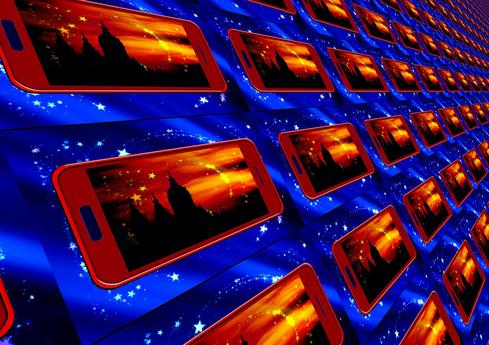Google Glass Sharpens Focus On The EnterpriseGoogle Glass Sharpens Focus On The Enterprise
Signs point to a sharper focus on the enterprise as Google Glass 2 designs surface and Google's consumer social media accounts for Glass shut down.


6 Top Programming Languages For Mobile Development
6 Top Programming Languages For Mobile Development (Click image for larger view and slideshow.)
Google took another step away from its consumer Glass initiative when it disconnected its social media accounts for Google Glass recently. That decision built on the earlier move to halt its Explorer program, which signaled the death of the Google Glass consumer efforts.
The glasses struggled to gain favor among consumers, with their steep $1,500 price tag and no clear purpose for them other than messaging friends and family, and checking stock prices and sports scores. Google's enterprise efforts for Glass, though, seem to be expanding.
Last month, for example, Google filed documents with the Federal Communications Commission, in which it revealed new drawings for Google Glass 2. This filing appeared to bolster a Wall Street Journal report over the summer that Google was having healthcare, manufacturing, and energy-related companies testing out a new and improved version of Google Glass.
On Sunday, 9to5Google cited in a report, "multiple people familiar with the matter say that Glass: Enterprise Edition is only just now starting to see wider adoption."
There are 10 certified partners listed on the Google Glass at Work page, which showcases some of the ways these organizations are using Glass in their products and services.
APX Labs, for example, develops software for smart glasses. It believes the value of smart glasses can be found in delivering information hands-free to workers and allowing them to keep their heads up while working. Late last year, APX received $13 million in venture funding for its enterprise platform for smart glasses, according to an APX announcement.
Meanwhile, Augmedix uses Google Glass in the healthcare field, in which doctors wear Google Glass while treating patients and a remote scribe viewing audio and video from the Glass enters information into that patient's electronic health records, which the doctor later reviews before it is submitted to the patient's chart.
Ian Shakil, Augmedix CEO and cofounder, said his company's growth has risen dramatically since its founding in 2012, and demand for Google Glass has also increased tenfold over the past year. He noted that Augmedix has had no trouble getting orders filled.
"Google paused its consumer-facing Explorer program [...] but our supply of Glass remained unaffected," Shakil told InformationWeek in an interview. "Google has publicly stated they are committed to the Glass platform."
Although Shakil could not address his familiarity with Google's plans for Glass, he did comment on the various drawings of Google Glass that he has seen in the media over the past month or so.
"Google Glass Explorer, as we know it, was made for consumers, but adopted by the enterprise," Shakil said. "All the [drawings in the media] show incredible improvements."
The original consumer design ran on only 2 GHz, and it ran hot. But in viewing some of the media reports that featured drawings of Google Glass reportedly submitted to the FCC, Shakil said they move the needle with improved networking capacity, a more modernized CPU, and better thermal changes. "Those are the things that we get excited about."
Although the number of Glass at Work certified partners on Google's website was 10 in 2014, according to a CIO report, and remains at that number today, some startups are developing products around Google Glass. On AngelList, a number of companies are listed under Google Glass startups, such as Yosko, a mobile app that interfaces with hospitals' Electronic Health Records (EHR) systems, and Vital Enterprises, which produces a software platform for Smart Glasses for "high-skill" professionals, including surgeons and spacecraft engineers.
[Read Microsoft HoloLens Ready for Developers, Enterprises.]
Shakil said the number of certified Glass at Work partners may not be as meaningful as the growth of these certified partners and the number of enterprise Glass startups that are developing for the Glass platform -- indicators of Google's expansion of its enterprise Glass efforts. These events, after all, are some of the necessary ingredients needed to spur a Glass ecosystem.
As the enterprise Glass hardware and software offerings proliferate, Google may eventually be able to lower the price on the devices to make them more affordable for consumers, speculated Shakil. By then a wider breath of Glass software may be available, given consumers another reason to consider buying the devices.
"One of our doctors [who use Augmedix] asked if he could call his wife on this device, or use it when he would go skiing," Shakil recalled. "I told him he can't do those things now, but over time we may want to surface more consumer features."
At that point Google's consumer glass effort may have its pulse revived.
About the Author
You May Also Like






